V. François-Xavier & Claude Lalanne

Sheep stools from 1974
François-Xavier Lalanne — Born in Agen, France, 1927. Died in Ury, France, 2008. Claude Lalanne — Born in Paris, France, 1924.
Claude and François-Xavier Lalanne are part of a long, brilliant tradition of Western dilettantes. That is, they are part of a stream of the thoroughly interested sort, who, having deeply submerged themselves in literature, the fine arts and various histories — ancient, lateral and celestial — surfaced with delight and an impish sense of how things aren’t. For the Lalannes, in the company of other folly-makers like Giuseppe Arcimboldo, Prince Pier Francesco Orsini, Piero Fornasetti and Jean Cocteau, were not concerned with bolstering existing conventions of how we eat or how we sit or ultimately how we see and think, but playfully inverting norms and exaggerating ordinary aspects to fantastic effect.
Claude and François-Xavier met in Paris in the early 1950s, at an exhibition of François-Xavier’s paintings. They were together until his death in 2008. Their working practice was fairly unique, as they always kept separate studios — Claude preferring to express flora in hers and François-Xavier giving form to strange fauna in his. But quite early on they eschewed first names, and all subsequent work (no matter the creator) was to bear the mark of only “Lelanne.” They were close friends, personally and idealistically, with many of the leading artists of midcentury Paris (Yves Tinguely, Marcel Duchamp, Jean Arp, Max Ernst, René Magritte, Salvador Dali). François-Xavier’s first studio was even adjacent to Constantin Brâncusi’s — interestingly enough, he took the studio as a painter and left a sculptor.

François-Xavier and Claude Lalanne

More sheep stools in the Lalannes’ Gae Aulenti–designed apartment, seen in 1966 (left) and 1969
If an associative context is needed to orient their work, it is certainly surrealism, though the Lalannes’ work embodies a specific strain. There are two main thrusts of the surrealist movement, the fantastic and the literal. The fantastic would be something like swirling dense visions of a character far from daily life (Salvador Dali would be an exemplar here), whereas the literal would be like something seen in daily life taken as-is, but changed in scale or context to bizarre effect. (For example, see the attached Lalanne images of the bathing hippopotamus that one can bathe in, the toilet in the image of a fly, and the large cat with the suckling teats that acts as a bar...) The poet John Ashbery, writing a review of a Lalanne exhibition in 1964, noted that unlike the avant-garde rhinoceroses of Eugene Ionesco and Salvador Dali, the Lalannes’ rhino was not symbolic but emblematically unvarnished — it was just the beast itself. In a way, the Lalannes restored the rhinoceros to its more realistic and weird countenance, so that we can view it in much the same way as the masked spectators in Pietro Longhi’s The Rhinoceros.

The Lalannes’ Rhinoceros
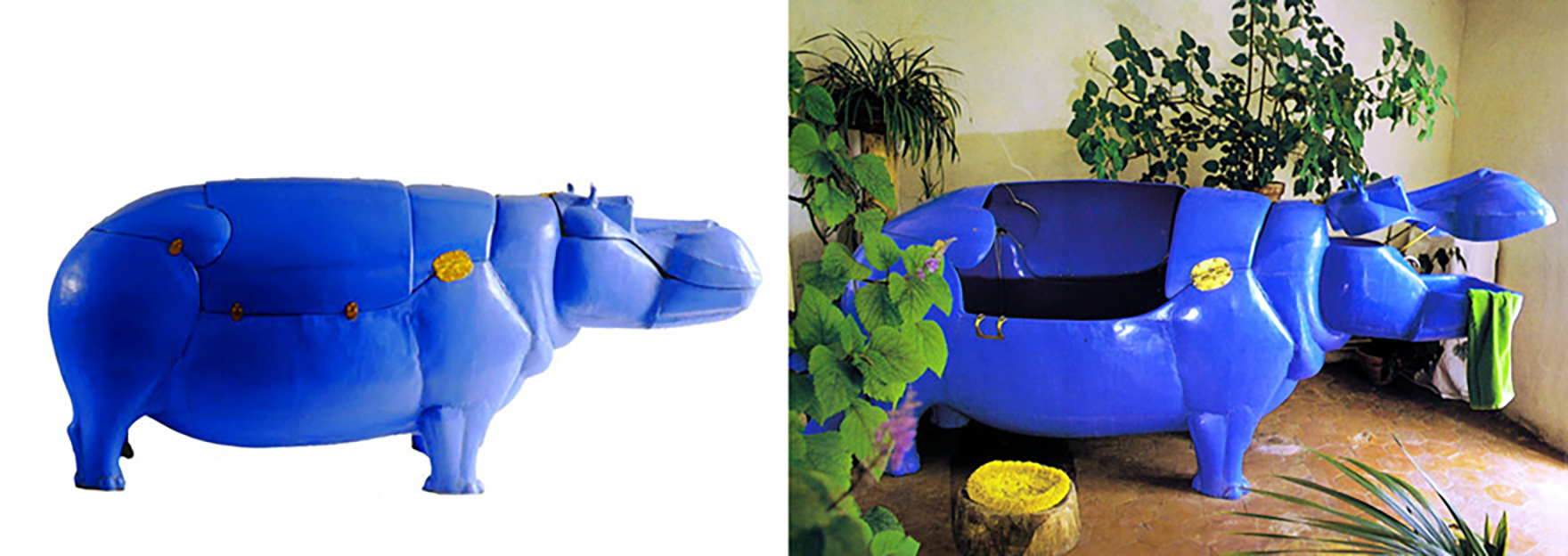
Hippoptame I (1968–69) was made in blue polyester resin for Teeny and Marcel Duchamp.
The Lelannes are perhaps best known for their sheep stools—and quite rightly, as the stools thoroughly embody the Lalanne sensibility: the simple gesture that is completely transformative. The stools are basically life-size sheep, with not much alteration in volume or visage (just a bit flattened on top). But seeing a “flock” of these chairs in a domestic context is a complete upending of what is expected, and joyfully so. In addition, their hippopotamus bath, commissioned by Teeny and Marcel Duchamp in 1968, is worth singling out, as it really has no precedent, outside of perhaps a story by Raymond Roussel or Roald Dahl... The large blue resin hippo has a sink in its mouth and a tub in its abdomen.
The work of Claude and François-Xavier Lalanne epitomizes what might be termed engrossed pleasure; there’s no Romantic pulling your hair out for posterity here, just, in the words of the Lalannes themselves, an “invitation to wander aimlessly at a snail’s pace” — probably the only speed at which one can view a fairyland bestiary.

La Mouche (1966)
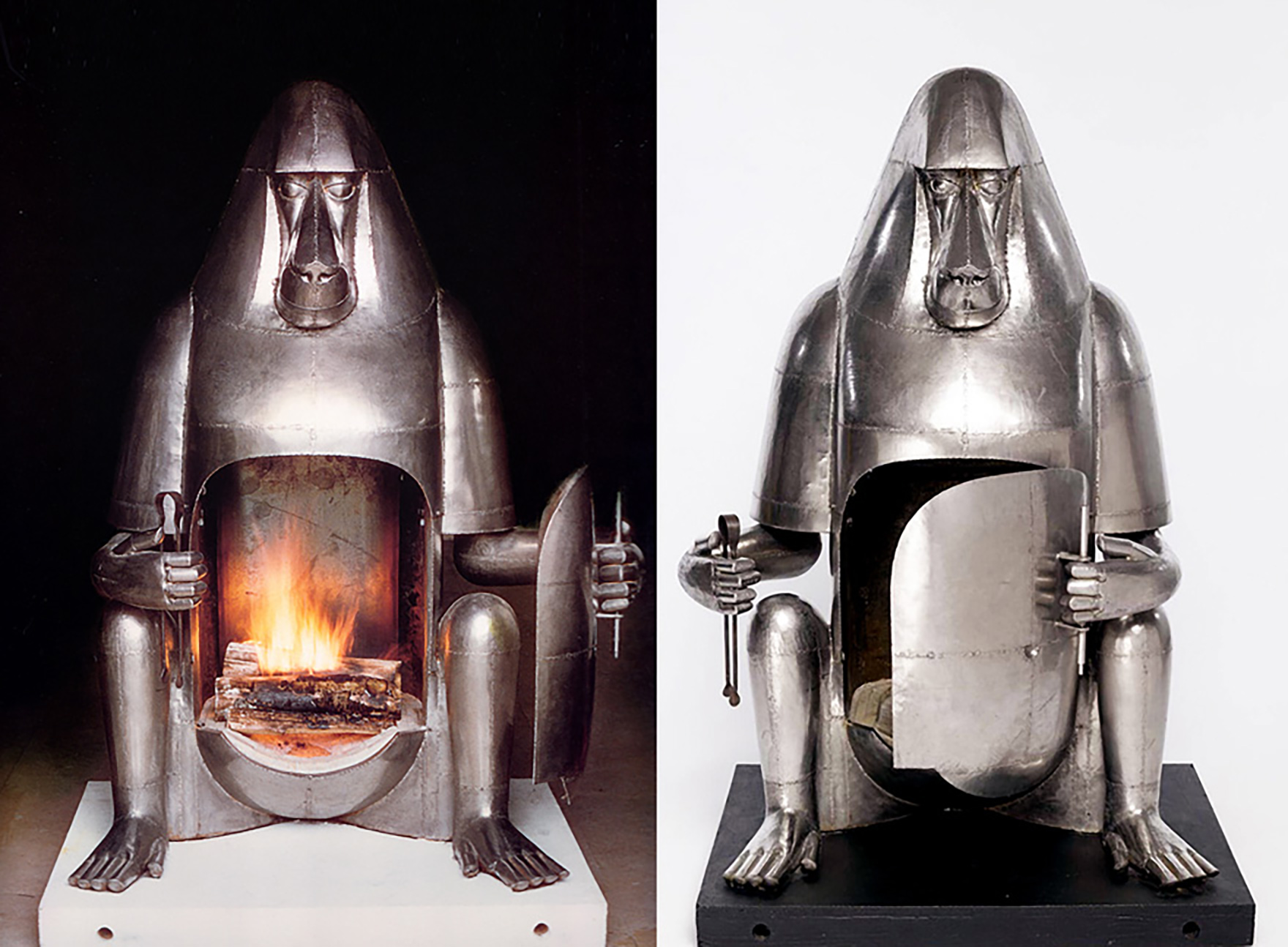
Babouin (Baviaan), from 1973
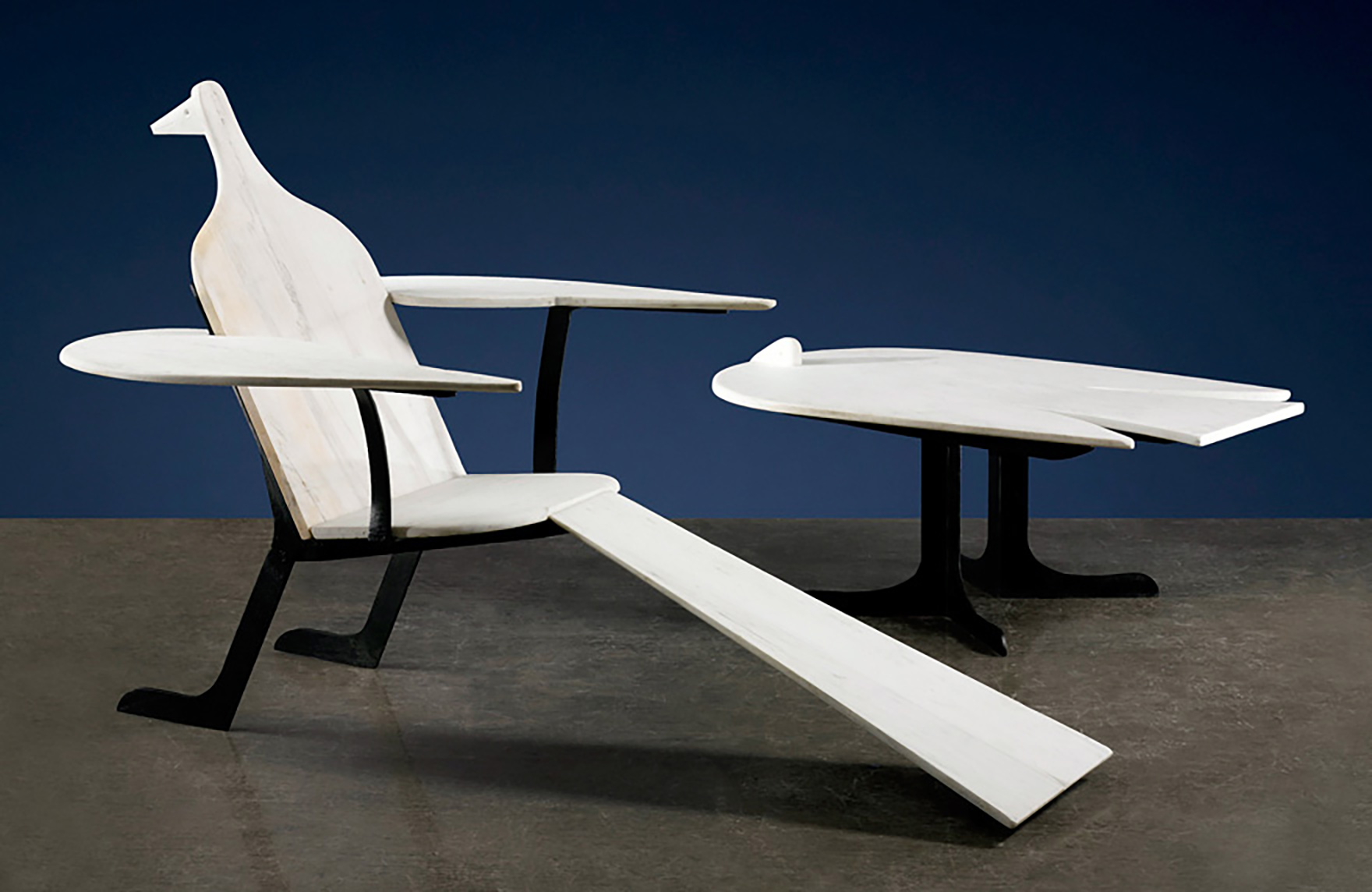
Oiseau de Mabre chair and low table (1974)
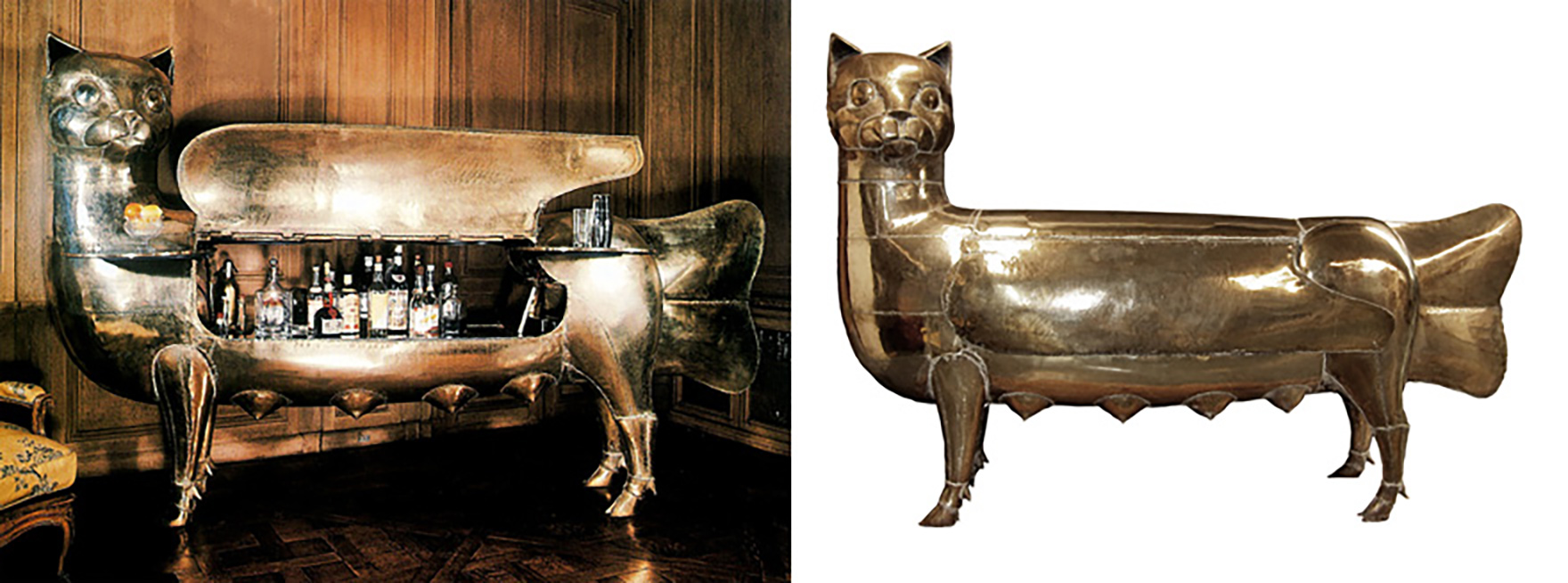
Le Grand Chat Polymorphe (1968)

Toad armchair (1969)
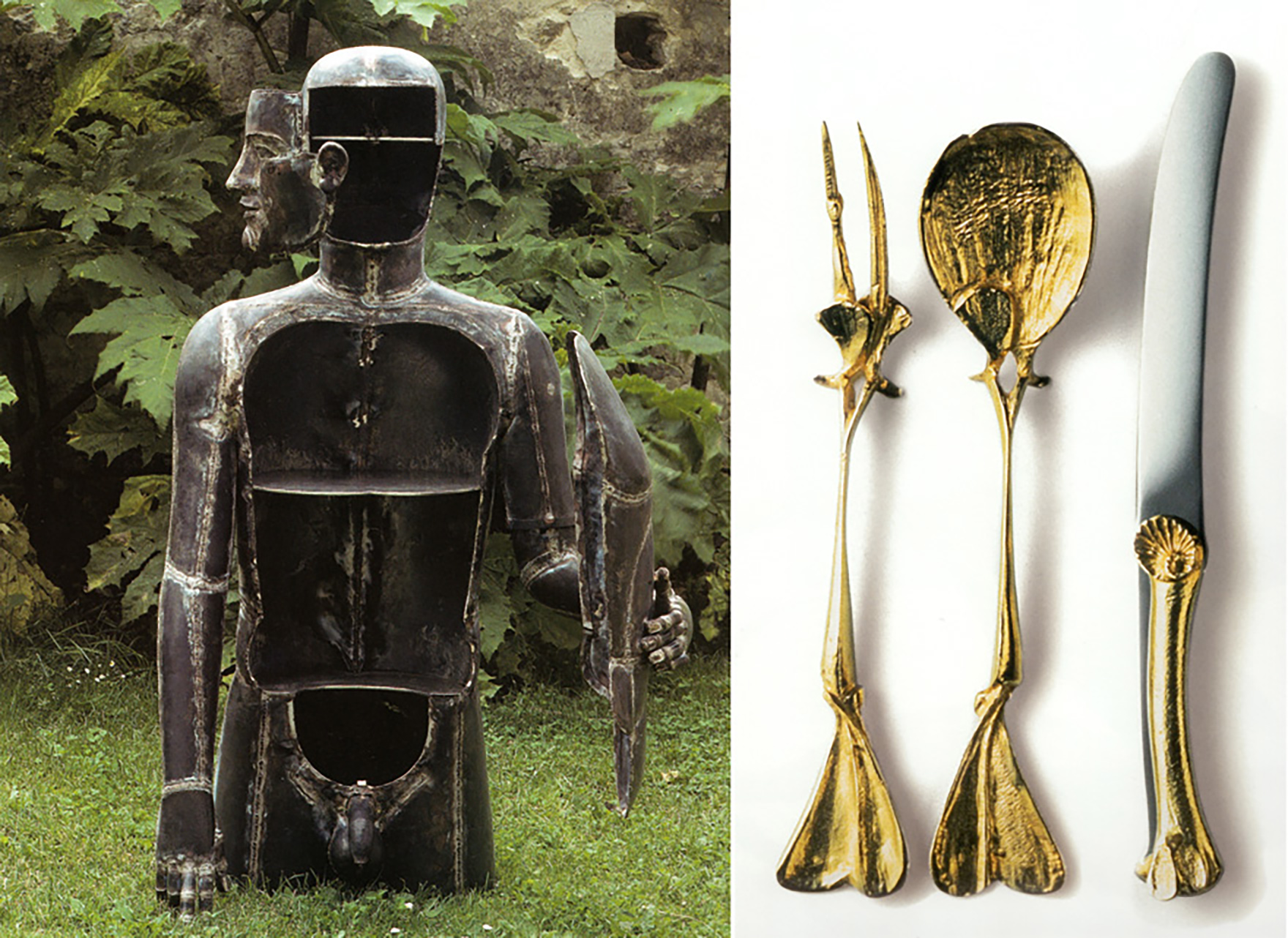
Left: Torse d’Homme (1970). Right: silverware for Artcurial (1991)
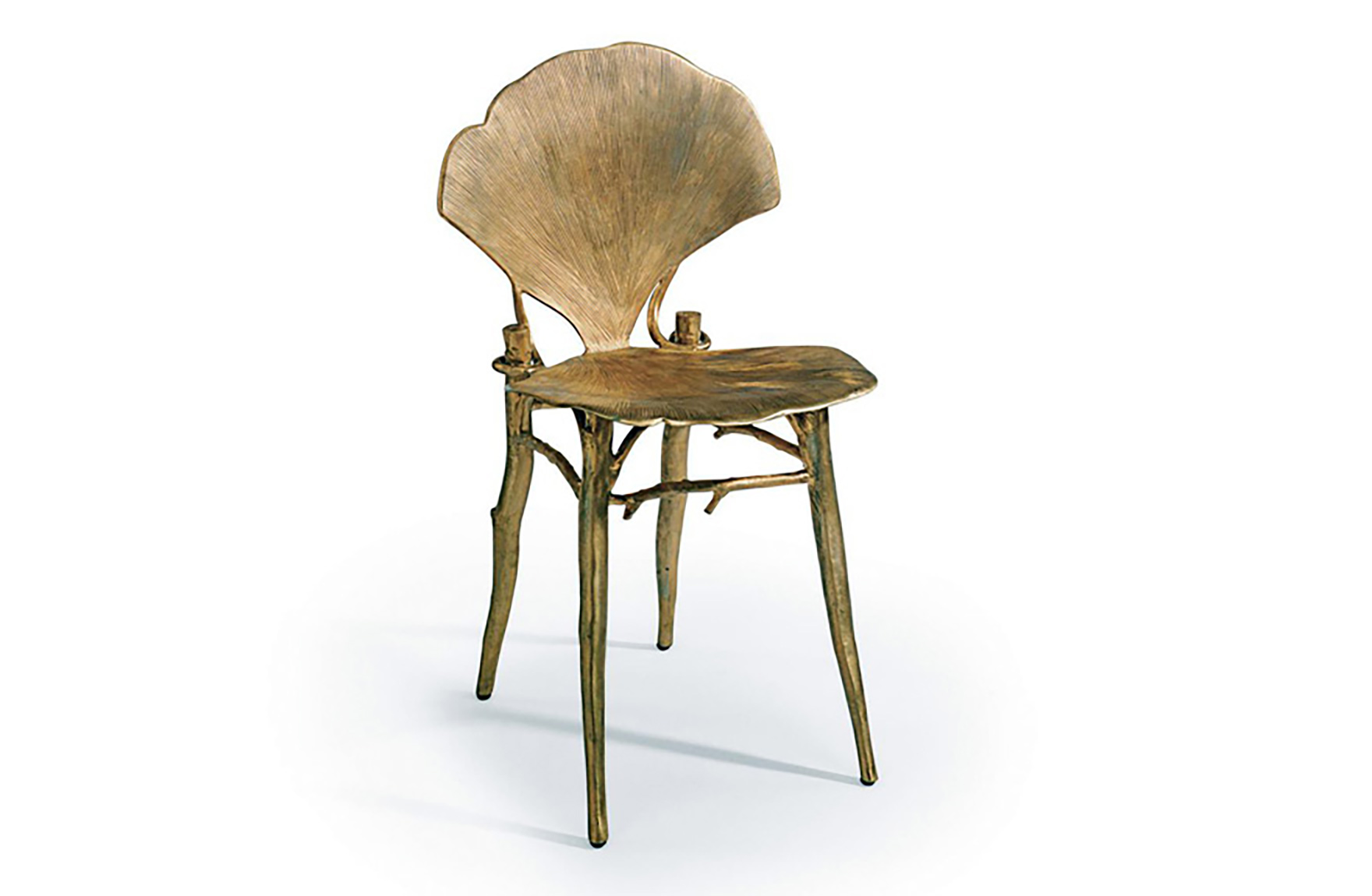
Ginkgo Leaf side chair (1996)
— AQQ
